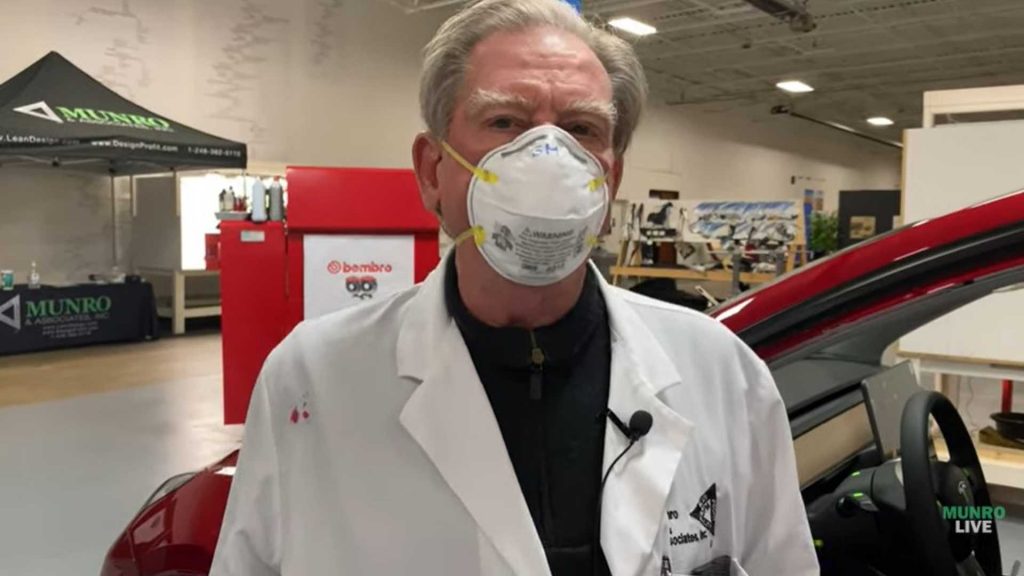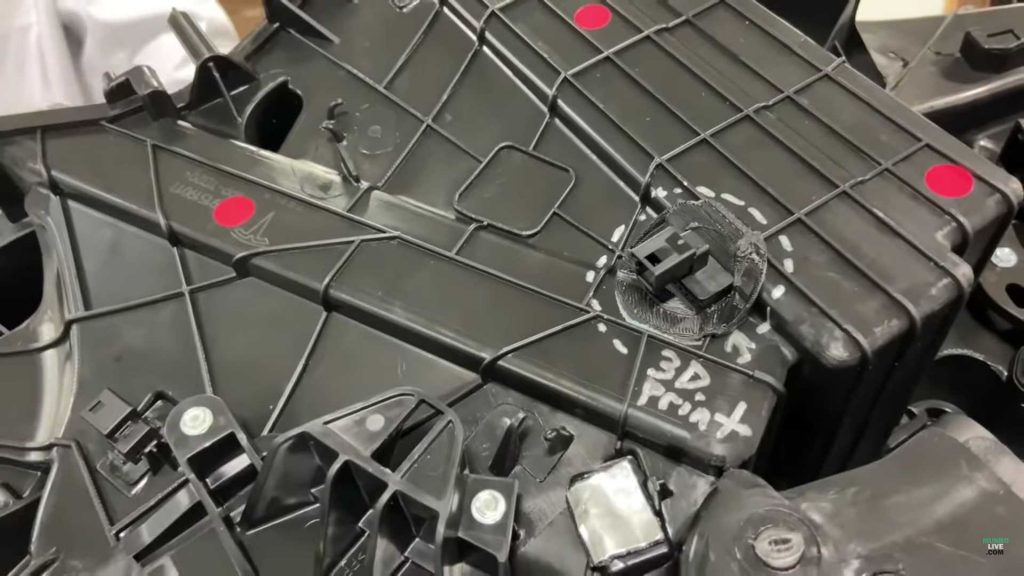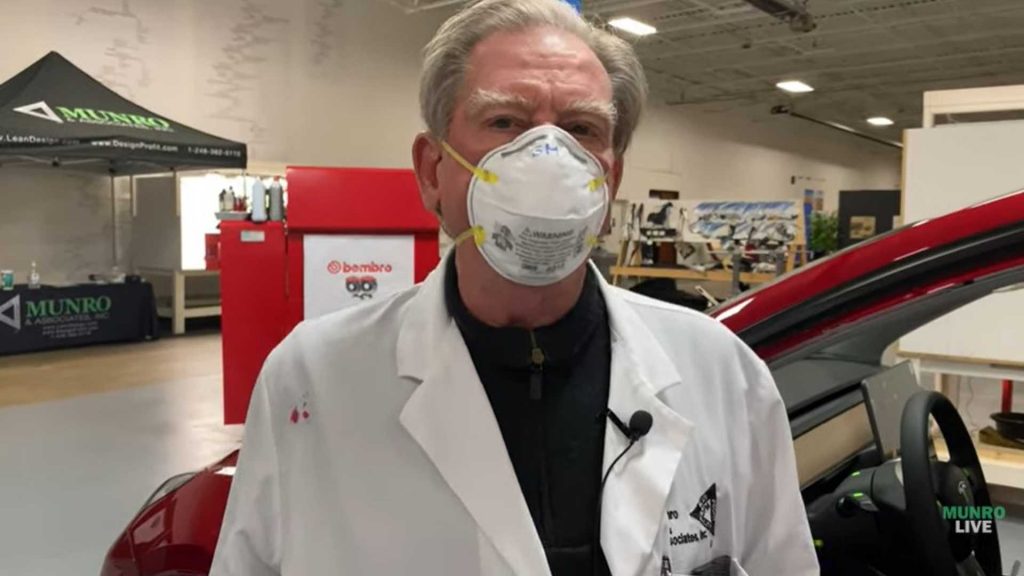A recent YouTube video in content creator Munro Live’s ‘Tesla Model Y teardown’ series has drawn attention to a rather unusual manufacturing practice employed by the electric car manufacturer. Upon inspecting the HVAC (heating, ventilation, and air conditioning) airbox of the car, a large injection molded component, the engineer Sandy Munro spots a 3D printed circular part – given away by the extremely visible layer lines. Summoning his technical intuition, Sandy attributes the use of 3D printing to a manufacturing fault in the Model Y production line, with the FDM fabricated part being a quick fix patch job.

The show must go on
Car manufacturers tend to have a ‘verification of process’ before commencing mass production of a model, meaning all of the individual components are manufactured and assembled to ensure it is possible. The initial trial run also offers an opportunity to train workers on the production line before any major commitments are made. If anything goes wrong, the manufacturer has an opportunity to remedy the problem and fine-tune the process before the start of production.
It is possible that Tesla missed a flaw in the Model Y’s HVAC unit and started producing the vehicle before it was fixed. When Elon Musk’s engineers finally caught on to the problem, it may have been too late, with hundreds of HVAC units already manufactured and ready for assembly. At that point, it would have been easier to just 3D print a missing section of the vehicle rather than organize a whole new production line to mold the large airboxes.
It is also possible that Tesla did catch the flaw at the verification stage, and made the choice to carry on with production anyway, instead using 3D printing to temporarily patch up the airbox while new molds are produced. This would allow the company to stay on schedule and deliver the first wave of Model Ys without any hiccups, which it did back in early March of 2020. As of yet, there has been no official comment from Tesla regarding the 3D printed part.

This is certainly not the first time an automobile manufacturer has used 3D printing to produce parts for its vehicles. Earlier this year, Porsche, known for its high-performance sports cars, announced the development of its new 3D printed personalized bucket seats. The “bodyform full bucket seat” will initially be limited to 40 prototypes and will be compatible with Porsche’s 911 and 718 ranges. Around the same time, APWORKS announced the 3D printing of a titanium part for the latest Bugatti Chiron. The 3D printed exhaust tailpipe was designed to be more lightweight and high-temperature resistant than its predecessor.
The nominations for the 2020 3D Printing Industry Awards are now open. Who do you think should make the shortlists for this year’s show? Have your say now.
Subscribe to the 3D Printing Industry newsletter for the latest news in additive manufacturing. You can also stay connected by following us on Twitter and liking us on Facebook.
Looking for a career in additive manufacturing? Visit 3D Printing Jobs for a selection of roles in the industry.
Featured image shows 3D printed quick fix for Model Y HVAC airbox. Photo via Munro Live.
